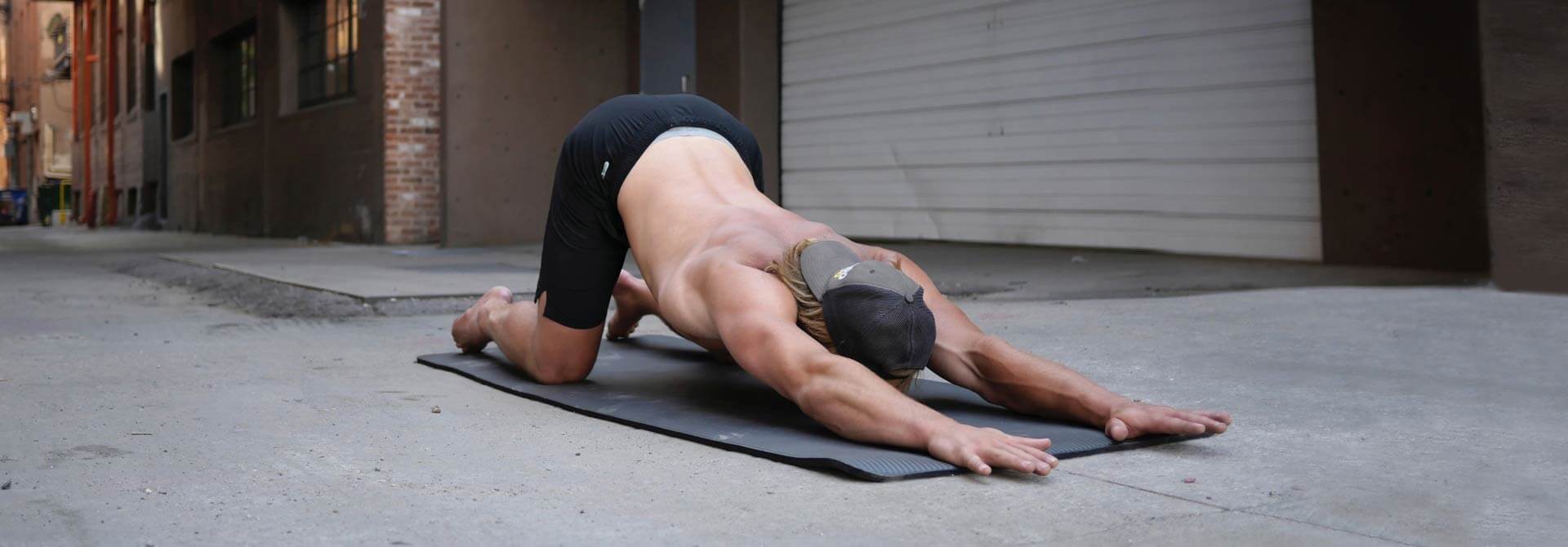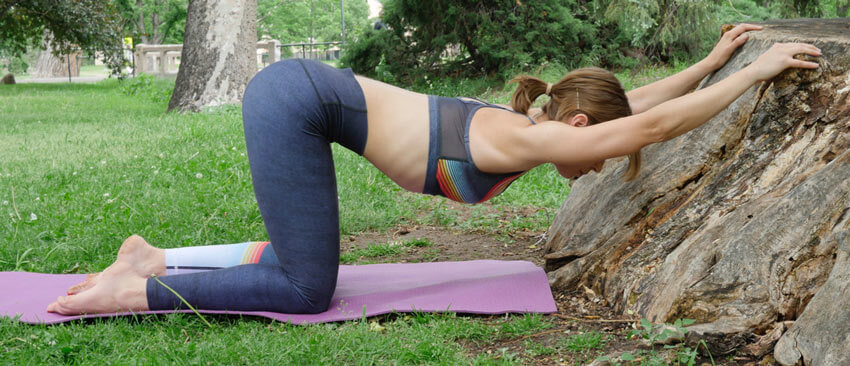2 Key Stretches to Counteract the Effects of Sitting

Whether you sit in an office for work, sit at a desk for school, or sit at a table or couch afterward to relax, sitting has become a default position for most of society. Unfortunately, with chronic sitting comes a whole host of other ill effects, such as a rounded upper back, a forward head and neck posture, and shortened, tight hip flexors. Add these together, and it is a dangerous recipe for shoulder, hip, and back pain over the long term.
Luckily, you can take action today to begin resolving some of these negative side effects associated with spending the bulk of your waking hours seated. Thousands of people all over the world have experienced progress using the GB Stretch Courses, a progressive series of dynamic movements and static stretches specifically designed to improve your Front Split, Middle Split, and Thoracic Bridge. Here are two stretches from these courses that will help counteract the effects of sitting.
1. Cat Stretch
As previously mentioned, one of the most harmful issues that occurs when people sit all day is that their upper back, head, and neck all hunch forward into a rounded posture. This chronically flexed position is referred to as kyphosis of the thoracic spine, and it can be severely detrimental to your shoulder mobility and overall quality of life as you age. What is happening here is two-fold: the muscles and fascia in the front of the body get tight, and the muscles in the back of the body get weak. With time, you are likely to experience discomfort, if not pain, somewhere in your shoulders, neck, or back if these issues are not addressed.
To combat these negative effects, try the Cat Stretch. This is a relatively simple stretch that can be performed virtually anywhere. From a kneeling position, reach your arms far out in front of you on the floor. With straight arms, allow the weight of your entire upper body sink your torso down in between your shoulders. You should strive to evenly arch throughout your entire spine, not just your lower back, and also be sure to actually extend through your thoracic spine, not just shooting your neck forward. Hold this Cat Stretch for several deep breaths, and focus on sinking lower down into the stretch as you relax.
2. Seal Stretch
When you spend hours sitting in a chair, the muscles along the front of your hips and upper legs will adapt to this position and become chronically shortened and tight. By lengthening the front of your hip and engaging your posterior chain, you can start to alleviate some of these issues. This is precisely where the Seal Stretch will come into play. From a hands and knees position on the floor, keep your arms straight and arch through your entire spine, looking up towards the ceiling and pressing your hips down and forwards.
While the Seal, or Up Dog, position is common throughout much of yoga, gymnastics, and functional movement circles, there are a few subtleties that you can perform in order to maximize the benefit of the stretch. First, try slowly rolling your neck up and down while holding still with the rest of your body. While looking up towards the ceiling, you are extending through your neck and cervical spine.
While looking down towards the floor, however, you are flexing your upper spine, thus stretching all the fascia along the entire back line of your body. Both are great to do, and much needed for those who sit all day. Lastly, in order to get the most hip flexor stretch as possible, try keeping your hips low to the ground, roll to the ball of your feet, and straighten your knees by "reaching" your heels to the back of the room. Engage your glutes, breathe, and focus on dropping the hips while keeping the legs completely straight.

Most adults have severe mobility deficiencies from spending hours upon hours each day sitting at a desk for work, for school or at home. Take a stand and combat the aging and dysfunctional effects of this daily, almost unavoidable habit through the Gymnasticbodies Stretch Series Courses.

